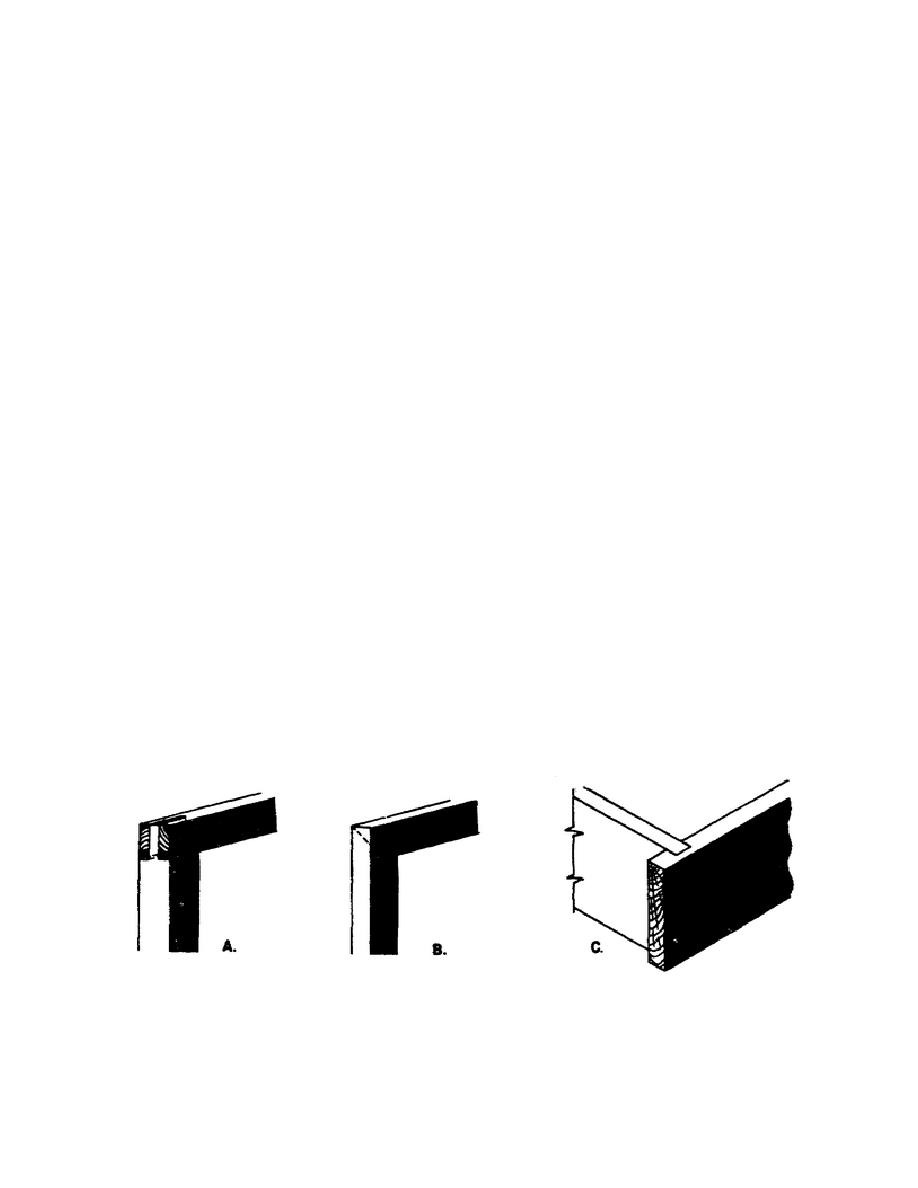
e. Whether the fasteners are to be visible or
contact over the entire area and that there are no air
bubbles or foreign particles between the wood layers.
concealed.
2-2. A product of the cabinetmaker is no stronger
2-6. Classification by Grain Direction. In our study
than its weakest joint. However it is well to remember
of joints, let's first consider their classification pertaining
that you need not be a skilled perfectionist to produce a
to grain direction. By this we mean the length, face, edge,
good joint. If you pan your work, visualize the various
and end of a board.
2-7. Parallel grain joints. Parallel grain joints are
steps in their proper sequence, and perform these steps to
the best of your ability, you can succeed in making joints
those in which the grain in the jointed pieces runs in the
that fit well and serve their purpose. A strong joint is one
same direction. There are two types of such joints: (1)
that is well fitted.
Parallel edge grain joints, which are used in joining wood
2-3. Many types of joints are used in woodworking;
edgewise; and (2) parallel right-angle joints, which are
however, in this section we will discuss only the
used in joining pieces of wood so that their faces are at
following classifications pertaining to cabinetmaking:
right angles and their grain parallel.
2-8. Right-angle joints. Right-angle joints are those
Parallel grain joints.
in which the grain of the woods meet at right angle when
Right-angle grain joints.
they are joined. There are three types of right-angle grain
Lap joints.
joints: (1) end-to-edge joints, in which the end of one
Grooved joints.
member is fitted to the edge of the other member (see fig.
Miter joints.
1, A); (2) oblique joints, where the graining of both
Mortise and tenon joints.
members is fitted end to end; and (3) end-to-face joints,
Dovetail joints.
where the end gain of one member is joined to the face of
Butt joints.
the other member (see fig. 1, C). The pain miter joint
shown in figure 1, B, is a good example of an oblique
2-4. This section will acquaint you with these
right-angle joint.
classifications, the types of joints covered by each, and
2-9. Classification by Construction Detail. We
where they are used, rather than with any detailed
have described the main classes into which all
descriptions of bow each kind of joint is laid out and
woodworking joints fall.
Now let's study joint
constructed.
classification with regard to construction detail.
2-5. The selection of a specific type of joint is
2-10. Lap joints. The lap joint a simple lap, or halved,
determined by the following factors:
joint made by cutting out equal half sections from both
a. Working qualities and strength of the material to
members which are to be jointed. There are several variations
be used.
of the lap joint. When the half sections are cut from the end
b. Whether the work is on the exterior or on the
of the members to be jointed and cross each other at right
interior and whether it is a movable or a stationary
angles, the joint is known as an end lap joint as shown in
project.
figure 2, A. If the members cross each other at right angles in
c. How the project will be fastened, such a nailed,
the center, the joint is called a cross lap joint, as
screwed, glued, or a combination of these.
d. Whether the grain is parallel or at right right
angles where the joint is fastened.
Figure 1. End-to-edge joints.
3



 Previous Page
Previous Page
